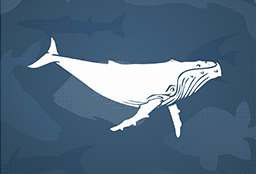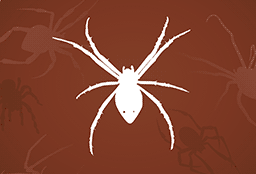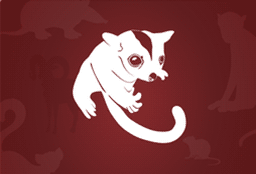As part of a ClimateWatch in Parks initiative, we have worked together with Parks Victoria to create this ClimateWatch trail at Serendip Sanctuary, a protected area 60 km south-west of Melbourne.
Contribute to citizen science while experiencing a wildlife oasis in the Western Volcanic Plain, home to a wide variety of native birds and mammals. ClimateWatch trails help obtain repeated observations, encouraging visitors and the local community to enjoy nature while contributing to science.
Commonly known as the muttonbird in Australia.It is one of the most abundant seabirds in Australian waters. They migrate to Australia in enormous flocks and often a number of birds are washed up on beaches and die as a result of exhaustion, sickness and bad weather.
Dark smoky brown body with a paler coloured throat, slender bill, light brown feet, narrow wings pointed at the tip, brown to grey-brown underwing colouration (some have whitish underwings), short rounded tail, body up to 43cm long, when flying black toes extend just past tail tip.
Nests on grass and leaves, and in burrows underground.
Size
40 – 45 cm long
Named in 1830 by explorer and botanist, Allan Cunningham. The genus name Grevillea honours Charles F Greville who co-founded the Royal Horticultural Society, and the species name robusta refers to its large size.
Evergreen tree usually grows 20 – 30 m tall but can range from 8 – 40 m in height.
Leaves
Silvery green and fern-like, green on the upper surface and paler underneath. They are 10 – 34 cm long and 9 – 15 cm wide, and consist of 11 – 31 segments that are narrow-elliptic to triangular in shape. The segments are 1.5 – 5 cm long and 2 – 10 mm wide, and they give the leaf a deeply divided appearance.
Flowers
Golden yellow to orange, each one is about 2 cm long but they are arranged in pairs along the flowering stalk to give an overall length of 12 – 15 cm.
Its genus name Banksia is named after Sir Joseph Banks, a British explorer and naturalist, and its species name marginata is from the Latin 'marginatus' meaning bordered, referring to the recurved leaf edges.
A variable species that occurs as a shrub, a flat-lying plant, or a tree, with smooth brown-grey bark. Grows up to 2 m high and wide as a shrub, less than 1 m as a flat-lying plant, and between 5 – 12 m as a tree.
Leaves
Green on the upper surface and silvery underneath. Each leaf is linear to oblong-shaped, 1 – 8 cm long, 3 – 13 mm wide, and has finely-toothed edges. The edges are recurved (rolled under) and may have small serrations, and their tip can be blunt or squared.
Flowers
Pale yellow cylindrical spikes forming a bottle-brush shape. Each flower head is 5 – 10 cm long and 4 – 6 cm wide and attracts nectar-eating birds.
Fruit/seed:
Chalcophaps longirostris sandwichensis
Other names: Pacific Emerald Dove
The Sot Leg, or Pacific Emerald Dove, is a squat ground-dwelling pigeon found in tropical and sub-tropical parts of Indonesia, Australia, and the western Pacific. It is found in all provinces of Vanuatu. They are usually solitary but can be found in small groups.
It is rarely found above 600 m in elevation.
The male has a white patch on the edge of its shoulders and grey crown. Females have a browner complexion and a grey mark on the shoulder. Adults have eyes that are dark brown and the bill bright orange-red. Young birds resemble females with brown scallops on their bodies and wings. Their wings have less green and the bill is dull.
Distinctive features
One toe faces backwards and three face forwards. The back and wings are emerald-green (shiny green), though the green can be inconspicuous when in flight. When in flight, pale bars on the back may be seen and the underwing is buff coloured. The shoulder is bright pale blue. Flight feathers and tail are blackish. The head and underparts are a muddy purple-rufous colour and the legs and feet are rufous.
Size
The Sot Leg is stocky and medium sized, typically 23-28 cm in length (from head to tail).
Behaviour
Call
Its song is an accelerating and rising series of around six to seven mournful coos. They also have a nasal “hoo-hoo-hoon” call.
Diet
Forages on the ground, often searching for fallen fruit. They also eat seeds.
Flight
Flight is fast and direct, but it prefers to walk rather than fly. It is often flushed when approached closely and has a loud wing-clatter.
Breeding
The Sot Leg builds a stick nest in trees, up to 5 m from the ground. It lays two cream-coloured eggs. The males perform a bobbing dance when courting the females.
The southern brown tree frog is native to southern Australia. Other common names of this tree frog are brown tree frog, whistling tree frog, or Ewing's tree frog.
Ranges from pale fawn, cream, or orange to light brown, although some individuals in western Victoria and South Australia are partly or completely green. It has a wide brown band that starts from between its eyes and runs down its back. Darker flecks are also scattered across its back. It has a narrow black or brown stripe that runs from its snout to its shoulder, and a pale stripe that runs from below its eye to the base of its arm. Its belly is white to yellow and breeding males have a light brown vocal sac (beneath their mouth).
Distinctive features
Its back is smooth with small lumps, its fingers have no webbing and its toes are half webbed.
The name ‘right whale’ was given to them by early European whalers who thought they were the ‘right’ type of whale to hunt. Their slow moving nature made them easy targets and their blubber was of high quality. They also floated when dead, making them much easier to move to shore.
Generally black with small patches of white on the belly and lacking a dorsal fin. They have a rounded head and short, spatula shaped flippers with a distinctive V shaped blow.
Distinctive feature
They have numerous, pale coloured callosities around the head.
Perennial, rhizomatous herb with strappy leaves.
Leaves
Glossy green, firm and flat. Long and thin up to 1 m long and roughly 1 cm wide. Leaves are usually taller than the flowering stem. Leaf base is broad with brownish edges. Tips of leaves have teeth.
Flowers
Grow in a whorled cluster attached to a straw-coloured bracts. Individual flowers are roughly 4mm long, but the cluster and leaf grow to 50 cm. Have a strong scent. Flower head is brown – during flowering petals are creamy yellow.
The male is unmistakable in full breeding varying from cobalt-blue in the east of its range to violet-blue in the west with a pale blue head. Wings and long tail are brown with a blue wash. In non-breeding plumage, called eclipse, he is very similar to the female, being pale brown above and white underneath although he retains the blue wash on wings and tail. The young look like the females.
Distinctive feature
The magnificent blue colour of the male.
Size
14 cm
A large jellyfish with a rounded bell shape that is clear or tinted brown or yellow. The bell has many obvious small white crystalline spots close to the surface that are evenly distributed.
The tentacles are located in the centre of the bell, with 8 individual arms visible. Two sets of tentacles are visible: one is short, fleshy (cauliflower-like) and the other is longer, clear to white (rope-like) and extend beyond the shorter fleshy tentacles. The longer tentacles also have white spots on their ends.
A spreading shrub with stiff, tangled branches often ending in sharp spines. Grows to 0.5 - 1.5 m tall and 2 m wide.
Leaves
Leaves are arranged alternately along branches. They are erect, linear to oblong in shape and are generally 5 - 20 mm long. They are smooth and without hairs and are mid-green in colour.
Flowers
3.5 – 6.5 mm long and 0.8 – 2 mm wide, mauve to lilac-coloured, bell-shaped, spotted, found solitary at the bases of the leaves. The flower's 4 stamens (pollen-bearing) are fully enclosed in the petal tube.
This spider is named for the cross the female weaves into the web. There are many theories about why the female does this including, strengthening the web, for camouflage, and for increasing prey catches as the cross reflects ultra-violet light which attracts insects. It may also deter predators which must go to the effort of cleaning off the extra silk after diving into the web.
The female has a silvery head with silver, yellow, red and black bands across its abdomen, and two yellow stripes running down its underside. Its legs are dark brown to black with one or two yellowish bands. The male and juveniles are brown and cream, with brown legs. It often appears to have only four legs because it sits with its legs in pairs along the stabilimentum.
Distinctive feature
The zigzag patterns (known as the stabilimentum) it weaves into its web to form an X or a cross, after which it is named.
As part of their environmental science curriculum, St. Joseph's College in Geelong has developed a ClimateWatch trail to help teach students about climate change and biodiversity.
Was previously named Bracteantha viscosa, and before that Helichrysum viscosum.
Small stiff herb with multiple branches and hair covered stems. Grows up to 20 - 80 cm high.
Leaves
Stems with fine hairs or prickles. 30 - 100 mm long and 2 - 10 mm wide linear leaves with bright green elliptic (oval like shape) that have a sticky and rough surface.
Flowers
Bright yellow flower heads, 20-30mm wide. Displays colours of gold, orange, bronze or vibrant yellow. These appear in September to December but may occur later. Large single flower surrounded by many bracts (petals).
The striped marsh frog or brown-striped frog is a common species in urban habitats It is a mostly aquatic frog native to coastal Eastern Australia.
A pale to grey-brown back with darker brown stripes. Usually also a pale stripe running down the middle of its back. Its belly is white and often flecked with brown, and there are dark spots and stripes on its limbs.
Size
4.5 - 7.5 cm
Although named after the early explorer, Charles Sturt, this legume was first collected by William Dampier on an island in the Dampier Archipelago in 1699.
Low spreading ground cover up to 3 m wide and 30 cm high.
Leaves
Dull green leaves are made up of 7 pairs of oval-shaped leaflets. Stems leaves and pods are covered in short soft hairs.
Flowers
Red flowers are arranged in upright stalks in groups of 3 or more. Each flower is up to 9 cm from the top of the standard to the base of the keel. The standard is the large petal with the black dome at its base. In some plants the dome may be red and albino varieties with completely white flowers have been found in the Pilbara.
Grey soft fur, with a white belly and a black stripe that runs from its nose, over its head and along its back. It has a long bushy tail, the last quarter of which is black, often with a white tip. Its ears are large and hairless, and its large eyes are black.
Size
About 28 cm long (from nose to tip of tail).
The Currimundi Lake ‘Loop the Lake’ walk traverses three habitat types providing ample opportunities to observe a diversity of species including ClimateWatch indicator species. The entire 4 km loop starts on the banks of Lake Currimundi leading to a beautiful open beach and looping back into unique coastal bushland. This is a circular route however you can choose to walk it in sections (north or south). The trail can be accessed from a number of entry points and involves crossing over on the beach – so be prepared to get your feet wet!
Explore unique coastal floodplain habitat, remnant wetlands, diverse vegetation, and wildlife on the Doonan Creek ClimateWatch trail.
The Kawana Forest Nature Trail leads you through the southern portion of Kawana Forest Bushland Reserve located to the west of Kawana Way in Meridan Plains. This trail is about 2 km long and can take up to an hour to walk the loop – depending on how many species you encounter!
The trail runs along the Maroochy Wetlands Boardwalk in Bli Bli. The timber and composite fibre boardwalk makes it easy and more accessible to explore this environmental haven at the edge of the Maroochy River.
Males have a rich blue and black plumage above and on the throat. The belly is grey-white and the beak is black. In non-breeding plumage, called eclipse, he is very similar to the female.
Females and young birds are mostly brown above with a dull red-orange area around the eye and brown beak. Females have a pale green gloss, absent in young birds, on the otherwise brown tail. Both sexes possess brown legs.
The nest is dome-shaped consisting of grass, moss, rootlets, twigs, spiders webs and other bramble. Found low in tussock, shrub or bracken.
A native pheasant up to 1 m, including tail. Plain rich brown above, coppery on wings, deep grey below; legs and feet dark grey, powerful.
Tail of male long and train-like, of two clubbed ‘lyrates’ about 60 cm long usually horizontal; glossy black and rufous above, silvery below, with notched ‘windows’; two slender, curved, ribbon-like guard-plumes’ and 12 lacy filamentaries, black above, silvery below. Moults annually. Full tail acquired at 6-8 years.
Tail of female (and immature male) is simpler, drooping and pointed, lyrates smaller, often hidden; typically looks twisted.
The nest is a bulky mound of sticks, bark, fern fronds and moss; on ground, bank, rock shelf, in stump or head of tree fern or to 25 m in a tree fork.






